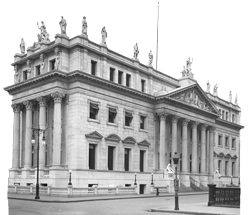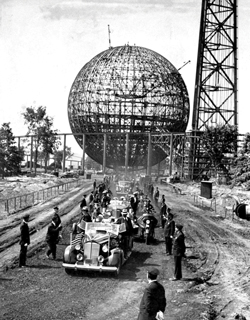Trending
This month in real estate history
This month in real estate history

1909: Weary of delays, justices take courthouse relocation into their own hands
Having outgrown their original digs in the Tweed Courthouse, justices at the Supreme Court of New York sought permission to select a site for their new courthouse, the New York Times reported 98 years ago this month. The justices introduced a bill in Albany that would empower them to act for themselves after a years-long struggle to move the court and an unpopular plan to replace the Tweed Courthouse with a skyscraper. “The question would be decided on its merits without any interference from real estate interests,” Justice Greenbaum said. “As the men who pass their lives in the courts the judges are experts on the subject and would make the best possible selection.” The judges were prodded into action by a proposal to demolish the 1861 Italianate court building at 52 Chambers Street and replace it with a tower that would have more room for the courts and chambers. “To this the Judges are by no means willing to agree,” the Times reported. Today, the Tweed Courthouse is the second oldest city government building in Manhattan after City Hall, and currently houses the Department of Education.

Flushing Meadows
1937: World’s fair sparks real estate boom in Queens
While workmen were busy preparing the Flushing Meadows site for the World’s Fair of 1939, real estate activity around the exposition area rose sharply, the New York Times reported 80 years ago this month. The flurry of interest in the borough was also stoked by such factors as the Queens subway link, which stretched as far as Kew Gardens and was soon to be extended to Jamaica. The transit expansion quickly paved the way for more residential development. In addition, the opening of the Triborough Bridge, the construction of the Midtown Tunnel and the later creation of a permanent park in Flushing Meadows made the area more attractive. Queens developers faced some difficulties, however, including an unwillingness among banks to originate loans in the same amounts they were lending in Brooklyn and the Bronx. There was also a concern that land speculators would make it unprofitable for developers to proceed with any large-scale projects.

Donald Trump
1979: Donald Trump announces plans to demolish Bonwit Teller to clear the way for Trump Tower
Donald J. Trump announced that he would destroy the Bonwit Teller building to make way for a 60-story, $100 million, bronze-hued skyscraper, the New York Times reported 38 years ago this month. Trump’s bronze behemoth, designed by Der Scutt, supplanted the 12-story limestone Beaux-Arts ziggurat with an opulent entrance that the Times described as “a spilled casket of gems.” Built in 1929, Bonwit was once the most elegant department store in the city. Trump debuted his plans at a time of mounting concern about the number of tall and bulky buildings rising in Midtown; Trump Tower was especially imposing, thanks to air rights assemblages and zoning bonuses. The deals included $10 million for Bonwit’s leaseholds and an additional $5 million for the neighboring Tiffany & Company’s air rights. Robert F. Wagner Jr., chairman of the City Planning Commission, described it as “certainly not an average building.” He added that it was “a very significant site and we would want to take a careful look at the building.”




